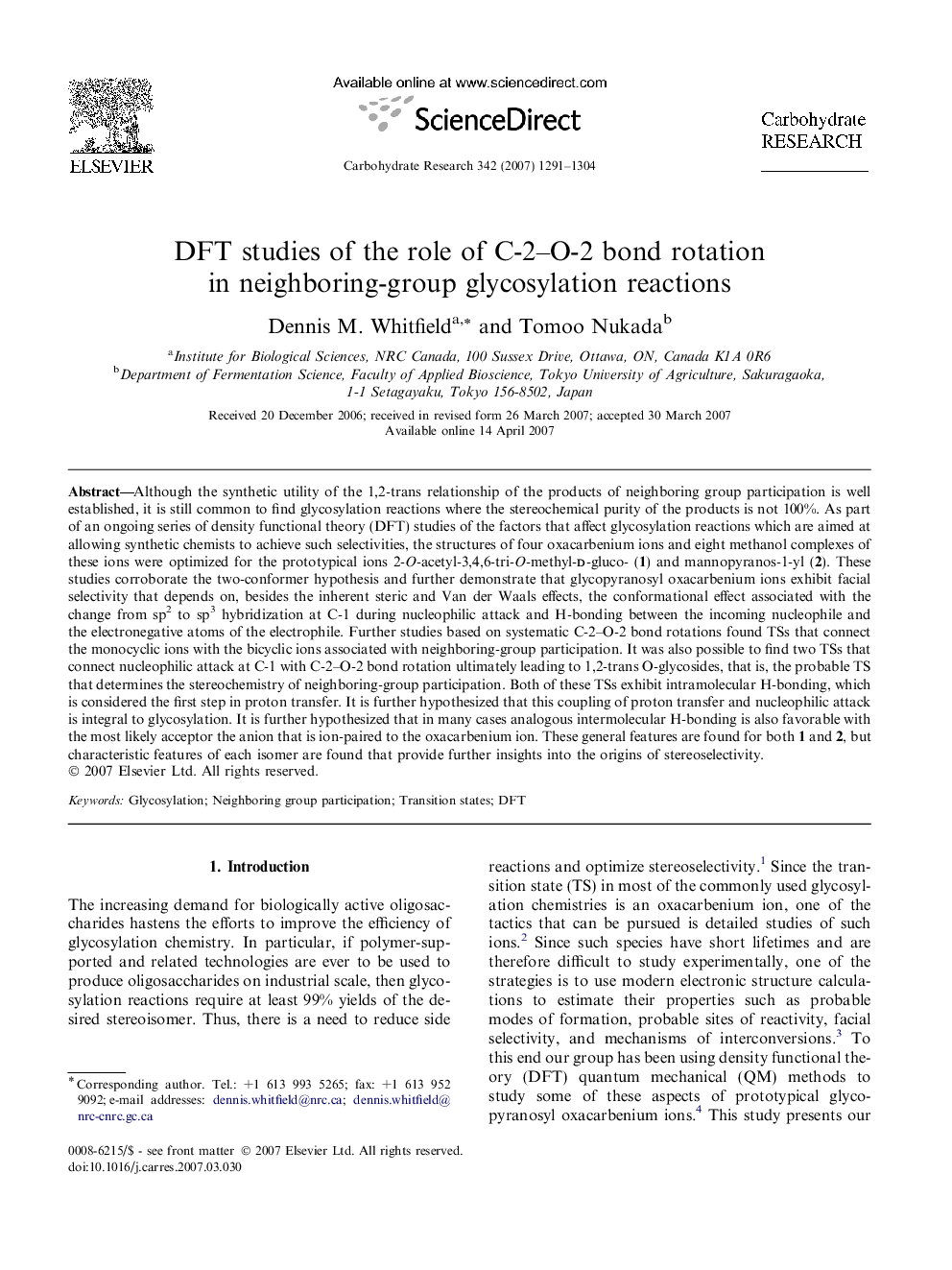| Article ID | Journal | Published Year | Pages | File Type |
|---|---|---|---|---|
| 1389840 | Carbohydrate Research | 2007 | 14 Pages |
Although the synthetic utility of the 1,2-trans relationship of the products of neighboring group participation is well established, it is still common to find glycosylation reactions where the stereochemical purity of the products is not 100%. As part of an ongoing series of density functional theory (DFT) studies of the factors that affect glycosylation reactions which are aimed at allowing synthetic chemists to achieve such selectivities, the structures of four oxacarbenium ions and eight methanol complexes of these ions were optimized for the prototypical ions 2-O-acetyl-3,4,6-tri-O-methyl-d-gluco- (1) and mannopyranos-1-yl (2). These studies corroborate the two-conformer hypothesis and further demonstrate that glycopyranosyl oxacarbenium ions exhibit facial selectivity that depends on, besides the inherent steric and Van der Waals effects, the conformational effect associated with the change from sp2 to sp3 hybridization at C-1 during nucleophilic attack and H-bonding between the incoming nucleophile and the electronegative atoms of the electrophile. Further studies based on systematic C-2–O-2 bond rotations found TSs that connect the monocyclic ions with the bicyclic ions associated with neighboring-group participation. It was also possible to find two TSs that connect nucleophilic attack at C-1 with C-2–O-2 bond rotation ultimately leading to 1,2-trans O-glycosides, that is, the probable TS that determines the stereochemistry of neighboring-group participation. Both of these TSs exhibit intramolecular H-bonding, which is considered the first step in proton transfer. It is further hypothesized that this coupling of proton transfer and nucleophilic attack is integral to glycosylation. It is further hypothesized that in many cases analogous intermolecular H-bonding is also favorable with the most likely acceptor the anion that is ion-paired to the oxacarbenium ion. These general features are found for both 1 and 2, but characteristic features of each isomer are found that provide further insights into the origins of stereoselectivity.
Graphical abstractFigure optionsDownload full-size imageDownload as PowerPoint slide
